JetCorr Follow-Up [05.29.2018] -- RFF and FF Closure Tests (And Bug Fix)
During the weekly JetCorr meeting on May 29th, 2018, it was suggested to perform a closure test using a RFF (FF) response to unfold the detector-level FF (RFF) jet spectrum. Slide 13 of the presentation in the link below shows the closure test using the RFF+FF response to unfold the detector-level RFF+FF jet spectrum.
https://drupal.star.bnl.gov/STAR/blog/dmawxc/jetcorr-update-may-29th-2018
It was also unclear as to why my unfolded spectrum doesn't have error bars. This turned out to be due to the fact that I was initializing the response object in RooUnfold wrong before; we created a response matrix assuming that the reconstruction efficiency would be corrected in a separate step, but I was initializing (and unfolding) assuming that they would be handled in one. With this fixed, my unfolded distributions have errors and everything behaves as expected. The closure tests (including the RFF vs. FF tests) with the wrong code can be found in this post:
https://drupal.star.bnl.gov/STAR/blog/dmawxc/update-05252018-run-9-embedding-closure-tests-r-03-charged
This turned out to be the reason that the Bayesian algorithm wasn't working as well...
With this fixed, I redid all 3 closure tests (RFF+FF vs. RFF+FF, RFF vs. FF, and FF vs. RFF). First, the closure test using the RFF+FF response to unfold the RFF+FF detector-level spectrum:
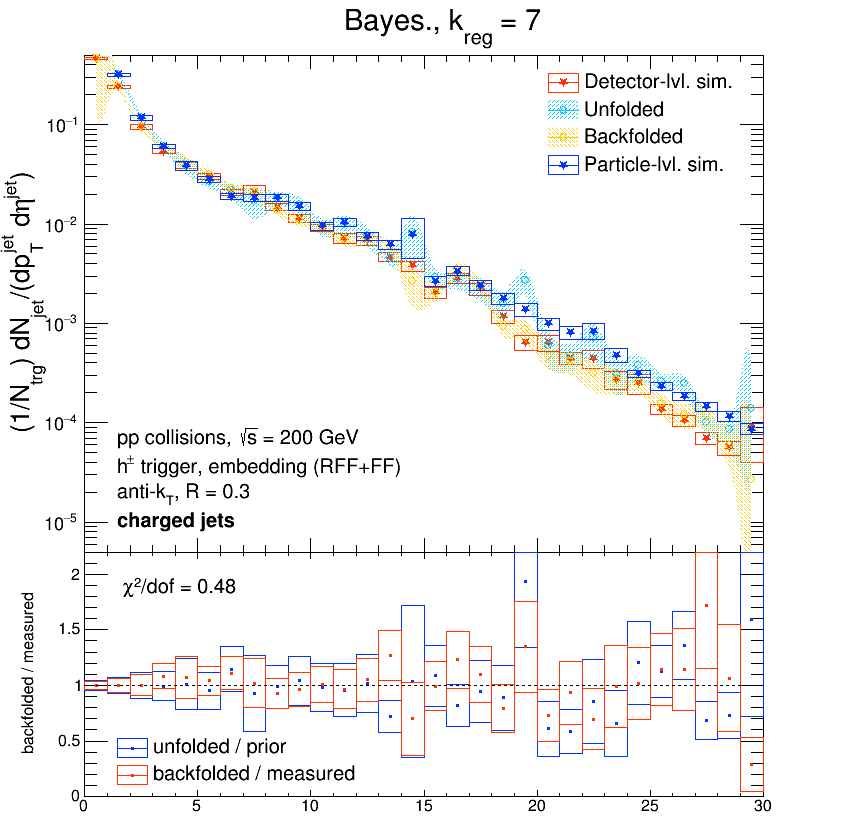
Since it's a bit hard to pick out the unfolded distribution, here's the prior (particle-level RFF+FF jet spectrum) compared to the unfolded spectrum for a few values of k:

Next, here is the closure test using the RFF response to unfold the detector-level FF jet specturm:
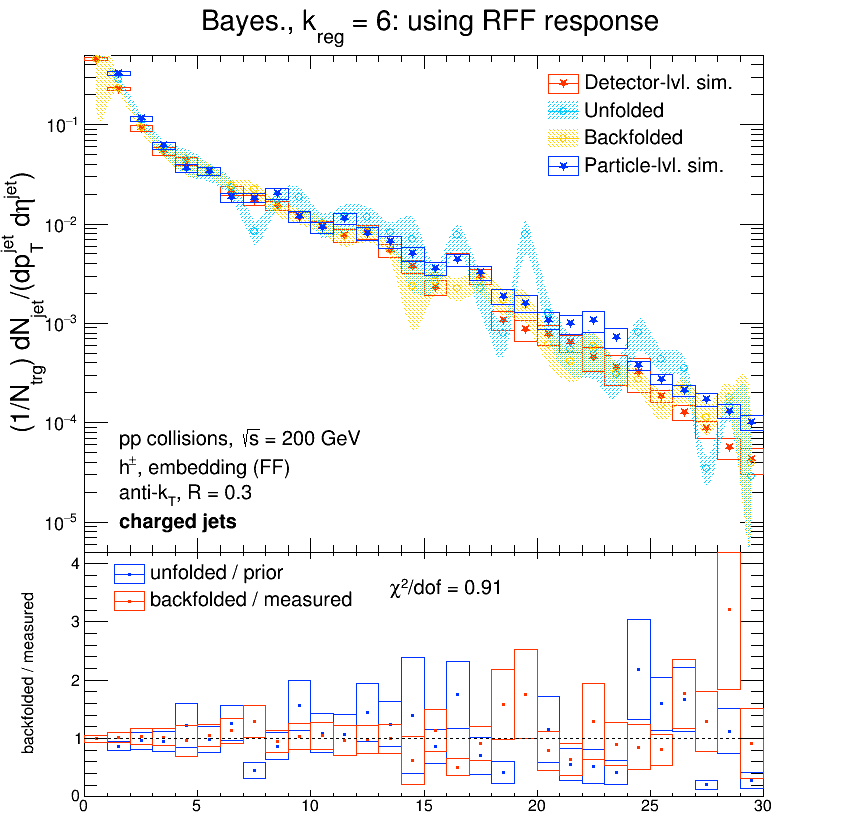
And, again, since the unfolded distribution is hard to make out:
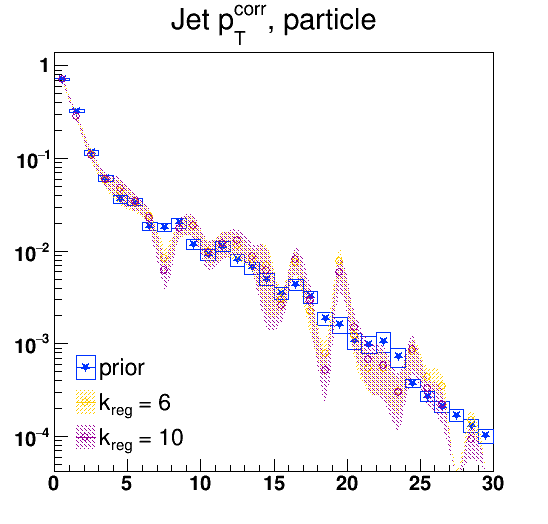
This time the unfolded distribution doesn't match the prior (in this case, the particle-level FF jet spectrum) early as well, but does reproduce the detector-level spectrum upon backfolding. The same goes for the FF vs. RFF closure test:
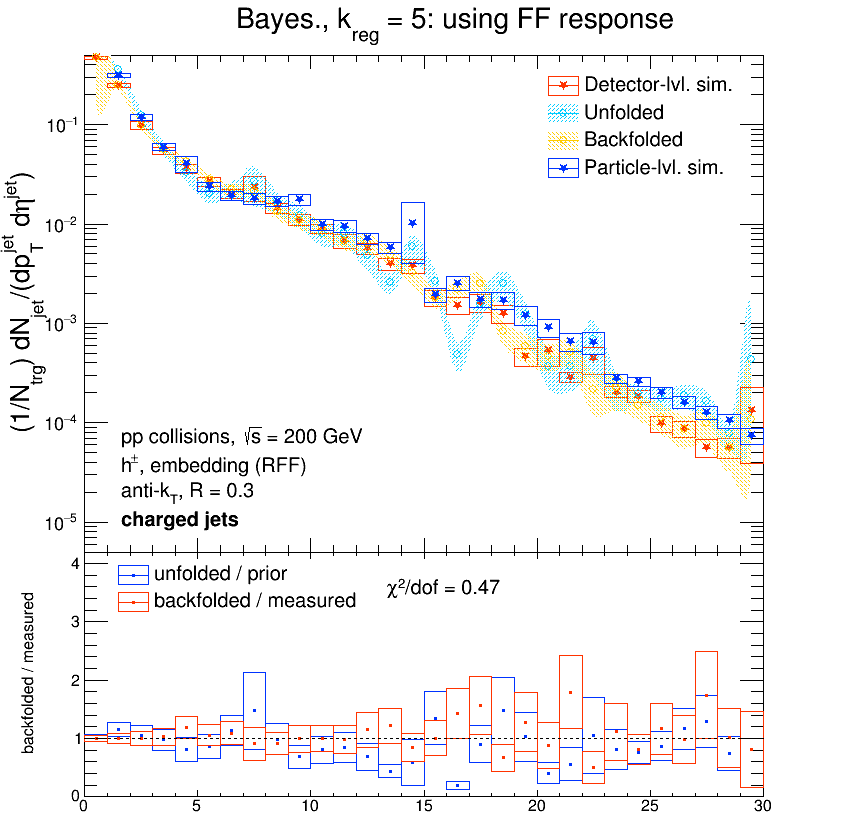
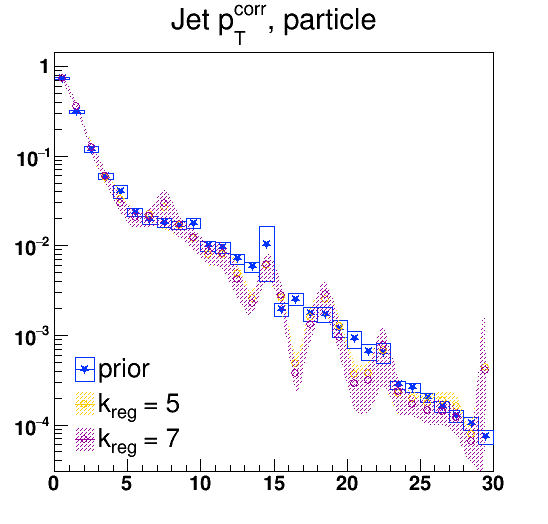
However, in all 3 tests, the low end of the spectrum (pT < 5 or so) is reproduced well, so perhaps it could be statistics? A good check to do next will be to unfold the RFF and FF detector-level spectra using the RFF+FF response.
- dmawxc's blog
- Login or register to post comments
